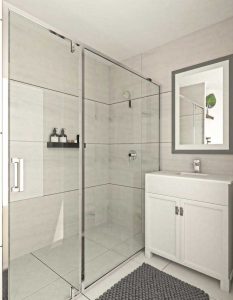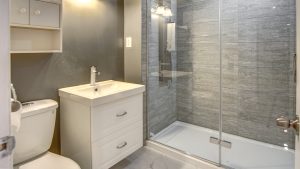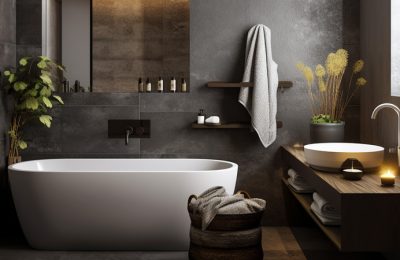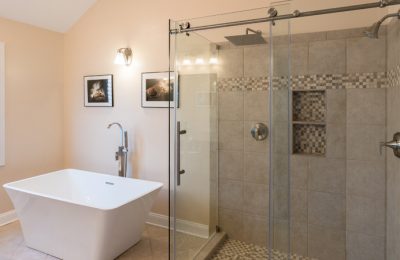
Changes Begins at Home
Recognition





Who We Are
SHAMAIM Homes is an Accredited, Licensed, and Fully Insured Residential Design and Build Company serving the Great Toronto Area. we offer a highly exceptional client-centered approach that leads to an enjoyable building and remodeling experience. As an award-winning company, not only do we warranty the material but also guarantee our workmanship to ensure all projects are up to Ontario Building Code (OBC).


Sean Bahmani
MA/GC
SHAMAIM Homes was created by Sean Bahmani, who has been providing top-quality services for years to Torontonians.
“I became interested in building houses and construction when I was very young as my father started to build our own triplex house.”
“After years of experience in Management, Quality systems, and Construction, I decided to build my own company to provide the highest level of quality in service for my clients and their needs.”
“I create this company to be a resource for those who want to enjoy building their dream place with someone whom they can trust, someone who has the same level of care for their property”
Why SHAMAIM Homes
When you choose SHAMAIM Homes, you’ll get an honest estimate, and a no-hassle guarantee service which will get the job fixed quickly and gives an enjoyable peace of mind.
Discover why SHAMAIM HOMES has been the top name in General Contracting and Custom Builds for the last few years. Pick up the phone and talk to one of our Customer Service team in Toronto. They’ll be happy to schedule a no-obligation and FREE Consultation session with you.

SHAMAIM’s Trades and staff are Licensed and Insured

SHAMAIM offers a 100% Satisfaction Guarantee on the Delivered services

SHAMAIM is Recognized by CBRB

SHAMAIM is a Member in Chamber of Commerce of Newmarket

SHAMAIM is a provincially and federally registered company

SHAMAIM is a Licensed Construction Company

SHAMAIM is Accredited through Best Business Bureau

SHAMAIM offers transparent pricing Contains no hidden fees and no-fine-print term

SHAMAIM’s Trades and Staff are following Ethical Standard Operation Procedures through their services

SHAMAIM is an Award Winning Company

SHAMAIM is a Fully Insured Company
What They Say
Marius and Claudia are going through their experience on their Major Renovation Project with SHAMAIM Homes
Let’s make your project a well-ended story like what we did for Darlene and her family
ExcellentBased on 21 reviews
 Mohammad Pouriman2023-02-14I’m writing this review for those have been looking for an entire team to trust, to rely, and sit and watch how amazing they are planning their service and doing their job as the way they planned. I Have been working with Shamaim Homes since they have started their service in Toronto! as a very conservative and detailed person, I’m strongly recommending their design, project management and build service. I personally am happy with their job to my new build custom house. In a meantime, I should thank Sean personally for being such a great manager, a humble and knowledgeable professional builder who led the entire team to finish my project in a way that he promised me earlier.
Mohammad Pouriman2023-02-14I’m writing this review for those have been looking for an entire team to trust, to rely, and sit and watch how amazing they are planning their service and doing their job as the way they planned. I Have been working with Shamaim Homes since they have started their service in Toronto! as a very conservative and detailed person, I’m strongly recommending their design, project management and build service. I personally am happy with their job to my new build custom house. In a meantime, I should thank Sean personally for being such a great manager, a humble and knowledgeable professional builder who led the entire team to finish my project in a way that he promised me earlier. roza hashemi2023-02-10Shan and his crew did a wonderful job in our home . They kept the work area clean the whole time. They were professional and always worked with smile and were very polite . We shopped around comparing quotes from different contractors. There are many good contractors out there who could do a nice job
roza hashemi2023-02-10Shan and his crew did a wonderful job in our home . They kept the work area clean the whole time. They were professional and always worked with smile and were very polite . We shopped around comparing quotes from different contractors. There are many good contractors out there who could do a nice job Marius Caprariu2023-02-07We just completed the home renovations with Shamaim Homes and we are extremely happy with the final product. From the beginning, Shamaim Homes were responsive, attentive to details and provided ideas for the renovations. The final product exceeded our expectations and we are living in our dream home. Shamiam Homes is insured and registered contractor so we have had something less to worry in our renovation project. The design ideas were bang on and improved the project. With respect to the value for money, I can definitely say it is the best (we dealt with other contractors and they can not even compare with the quality of service and the fees).We are strongly Shamaim Homes to all our friends and acquaintances that are in a need for renovations or new home.
Marius Caprariu2023-02-07We just completed the home renovations with Shamaim Homes and we are extremely happy with the final product. From the beginning, Shamaim Homes were responsive, attentive to details and provided ideas for the renovations. The final product exceeded our expectations and we are living in our dream home. Shamiam Homes is insured and registered contractor so we have had something less to worry in our renovation project. The design ideas were bang on and improved the project. With respect to the value for money, I can definitely say it is the best (we dealt with other contractors and they can not even compare with the quality of service and the fees).We are strongly Shamaim Homes to all our friends and acquaintances that are in a need for renovations or new home. Azita Alizadeh2023-02-07I am more than happy with his job.Shahed does everything thing very professional.He is an excellent constructor .His staff are very professional and polite.I highly recommend him.
Azita Alizadeh2023-02-07I am more than happy with his job.Shahed does everything thing very professional.He is an excellent constructor .His staff are very professional and polite.I highly recommend him. Mitra Asadi2023-02-07You are the best thank you
Mitra Asadi2023-02-07You are the best thank you masoud zamani2023-02-07Very nice, clean, professional and well organized team, They know how to get things done
masoud zamani2023-02-07Very nice, clean, professional and well organized team, They know how to get things done Bill Gerov2022-12-31I've dealt with multiple different groups for construction and no group has compared to this one. Their work ethic is outstanding and they have a clear idea of what they're doing. Anybody who hires them won't regret it!
Bill Gerov2022-12-31I've dealt with multiple different groups for construction and no group has compared to this one. Their work ethic is outstanding and they have a clear idea of what they're doing. Anybody who hires them won't regret it! Azam Kouhpour2022-12-31They were a great group and offered me their opinions. They cared very much and were there everything I needed them. They specifically helped me a lot with the designs and properly chose what would be best for each situation.
Azam Kouhpour2022-12-31They were a great group and offered me their opinions. They cared very much and were there everything I needed them. They specifically helped me a lot with the designs and properly chose what would be best for each situation. Nikki Gerov2022-12-31One of the best group of people I have dealt with. They are incredibly trustworthy, and I had zero worries all along. They were very reliable and always answered my phone calls or texts whenever I had questions. They were patient with me and helped me make important decisions, I valued their opinions very much. I recommend them to anyone!
Nikki Gerov2022-12-31One of the best group of people I have dealt with. They are incredibly trustworthy, and I had zero worries all along. They were very reliable and always answered my phone calls or texts whenever I had questions. They were patient with me and helped me make important decisions, I valued their opinions very much. I recommend them to anyone!
Our Process
-
Needs and Wants List
-
Develop: Virtual Design, Site visit, and Permit application for your Project
-
Construction
Needs and Wants List
As the property owner, try to identify and prioritize your lifestyle, needs, project objectives, and Budgets. Consider how you want to live in your new place. Would that be a place for the whole family? Perhaps with a bar or entertainment area! our team of experts will evaluate the existing conditions of your place to plan the project scope through the outlined budget.
Develop: Virtual Design, Site visit, and Permit application for your Project
According to your Wishlist, our experienced architectural and design team will present the most creative and functional 2D concept of your areas. Based on your Wishlist and our years of experience in design services, we try to accommodate your way of life and then you are all set for instant construction.
Changes can be made in real-time, so you can fully visualize your place coming to life. we will walk you through all the items listed in our packages of high-quality building materials and all included features and components. Once the design gets straight, we’ll provide the detailed agreement and payment structure.
Your space and the initial design concept will be visited and reviewed by our project management team to assess on-site structural, plumbing, and mechanical layouts. We’ll capture any necessary adjustments to the design or required changes. This information, along with drawings and plans, will be used to create a Final Design that will be the blueprint for the build and would be submitted to authorities (if needed) to obtain the required permits.
Construction
Your dedicated Project Manager is all set to go! We order all the required materials for your project and will have them delivered. We do ask that you provide space in part of your garage to keep these materials clean and safe. Alternatively, you could have a storage container delivered for the materials. You’ll receive regular updates from our CS team and your dedicated PM during the process.
Our Services
SHAMAIM Homes is your source for all your Building and Remodeling needs











shamaimbuild